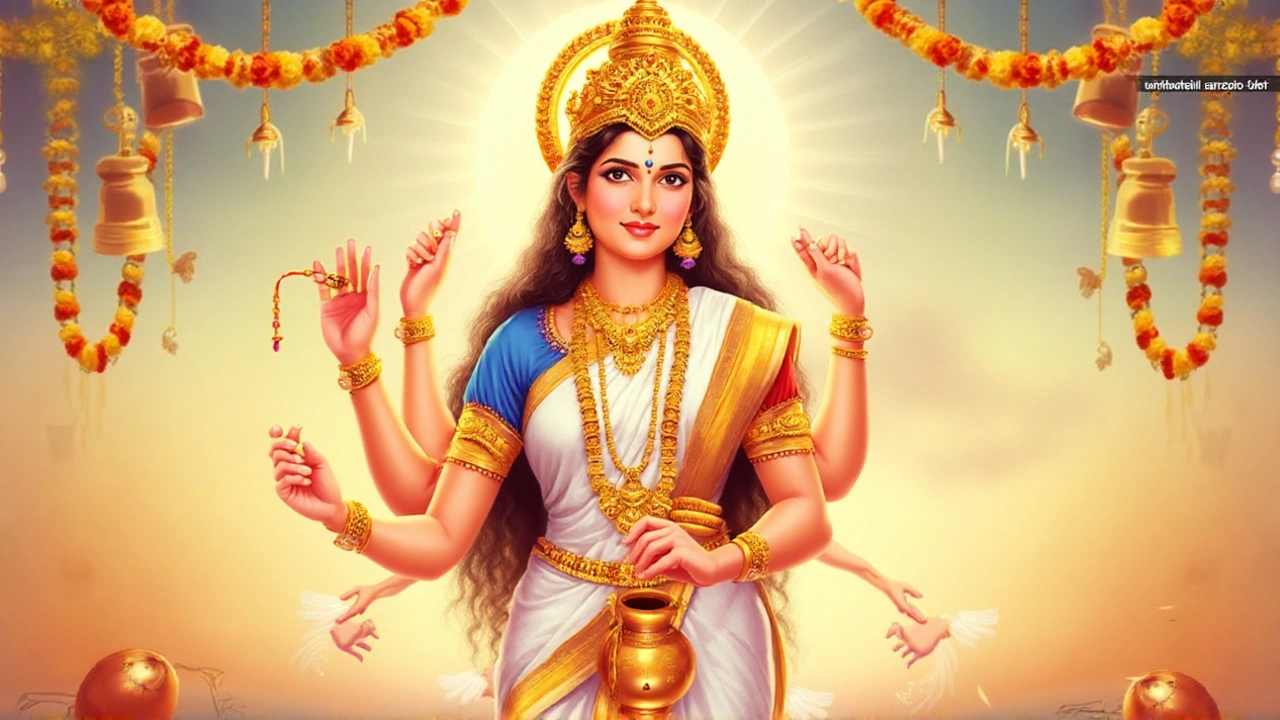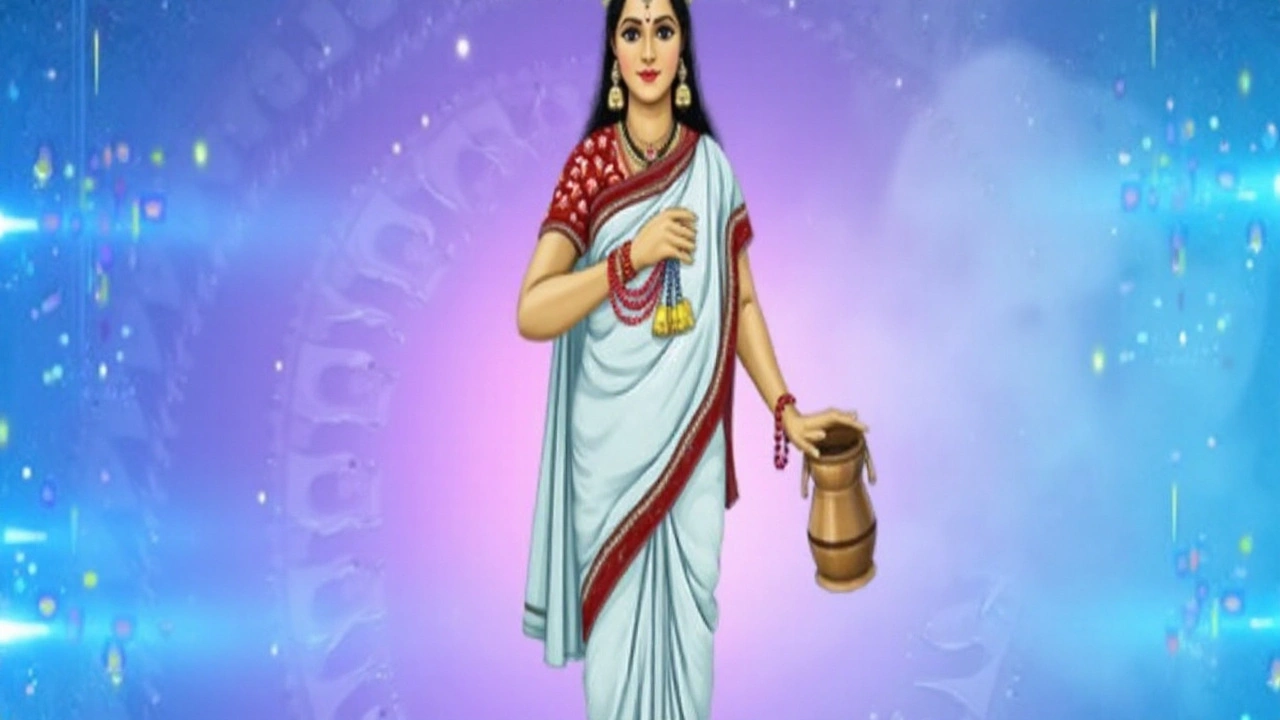Significance and Iconography of Maa Brahmacharini
Day two of the Shardiya Navratri, observed on the Dwitiya Tithi of Shukla Paksha in Ashwina, honors the fierce yet serene form of the Goddess known as Brahmacharini. She embodies absolute discipline, meditation, and the power of self‑control. In most depictions she wears a simple white saree, grasps a rosary in her right hand and a kamandal (water pot) in her left, symbols of continuous prayer and spiritual purity.
Legends say that Brahmacharini is the incarnation of Goddess Parvati during her period of severe austerity before she married Lord Shiva. Because of this backstory, worshippers believe she can grant inner strength, mental clarity, and the resolve needed to overcome life's obstacles. Those who approach her with genuine devotion often report that their prayers for personal growth or academic success are answered.
The goddess is also called Devi Yogini or Devi Tapasvini, titles that stress her mastery over yoga and intense tapas (penance). Her aura is said to attract the energy of determination, making her a favorite deity for students, athletes, and anyone on a path of self‑improvement.

How to Observe Navratri Day 2: Rituals, Colors and Astrological Tips
Celebrants begin the day with an early‑morning bath, wearing fresh, clean clothing that reflects purity. The most recommended hue for today is orange, signifying vigor and zeal, though many also wear white to echo the goddess’s own attire. Red remains popular in some regions, representing devotion and love.
Before the altar, a diya lit with pure desi ghee is placed beside a statue or image of the goddess. Offerings include:
- White mogra, hibiscus, and jasmine flowers – the colors align with the deity’s calm yet powerful nature.
- White sweets such as peda or laddu, presented as prasad.
- A kalash filled with Ganga water, betel nut, coins, akshat (rice mixed with turmeric) and durva grass, kept burning throughout the nine‑day period.
- An abhishek (ritual bathing) using milk, curd, honey, and occasionally rose water.
The core mantra recited is “Om Devi Brahmacharinyaye Namah” (ॐ देवी ब्रह्मचारिण्यै नमः). Devotees also chant verses from the Durga Saptashati, especially the chapters that praise the goddess’s steadfastness. Evening aarti is performed with a mix of incense, bell ringing, and rhythmic clapping, maintaining a continuous flow of devotion.
Fasting, commonly observed with a single fruit or light grain, is broken only after the final prayers. This discipline mirrors Brahmacharini’s own vow of restraint and reinforces the day’s theme of self‑control.
Astrologically, the day is said to favor zodiac signs such as Aries, Leo, and Sagittarius, who may feel an extra boost of confidence and courage. Those born under these signs are encouraged to focus their intentions on career milestones or academic goals, trusting that the goddess’s blessings will clear the path.
Beyond personal worship, families often organize community gatherings where the Kalash remains lit, symbolizing prosperity, growth, and an unbroken spiritual light that lasts the entire Navratri. This collective energy reinforces the belief that spiritual discipline, when shared, amplifies its effect.


